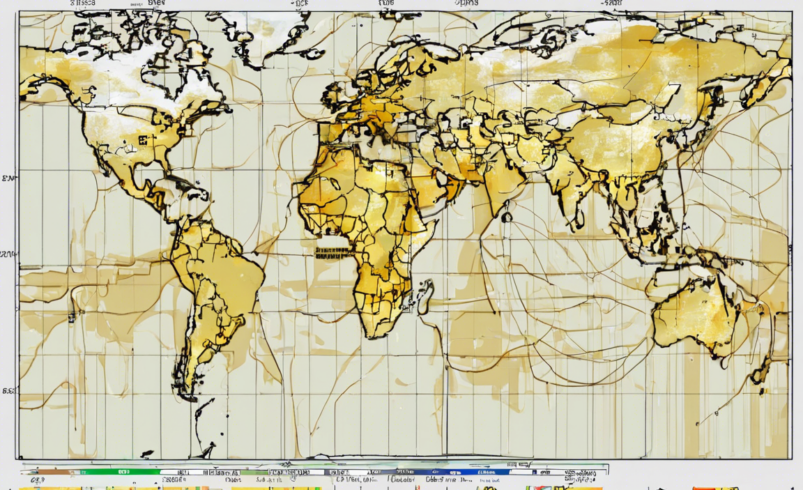Inmarsat Aviation is paving the way for a new era in aviation communications with its innovative Inmarsat Mobile Direct (IMD) satellite technology. This groundbreaking technology is set to revolutionize the way airlines and passengers connect and communicate, delivering a superior inflight experience while also improving operational efficiencies for airlines.
Understanding IMD Satellite Technology
IMD satellite technology leverages the power of Global Xpress (GX) satellites to provide seamless and high-speed connectivity to aircraft in flight. This technology offers unmatched coverage across the globe, ensuring that airlines can stay connected regardless of their route.
How Does IMD Satellite Technology Work?
-
Global Xpress Satellites: IMD technology operates through the Global Xpress constellation of satellites, which are in geostationary orbit around the Earth. These satellites provide wide coverage and high throughput, enabling reliable and high-speed connectivity for aircraft.
-
Onboard Hardware: Aircraft equipped with IMD technology are fitted with advanced onboard antennas and modems that communicate with the Global Xpress satellites. These components ensure a robust and stable connection throughout the flight.
-
Ground Network: The satellites relay data between the aircraft and Inmarsat’s ground network, which is connected to the internet and other communication networks. This seamless integration enables real-time data transfer and communication.
Benefits of IMD Satellite Technology
1. High-Speed Connectivity: IMD technology offers high-speed connectivity comparable to terrestrial networks, allowing passengers to stream content, browse the internet, and stay connected during flights.
2. Seamless Coverage: With global coverage provided by the Global Xpress satellites, airlines can offer uninterrupted connectivity to passengers regardless of their location, even over remote or oceanic routes.
3. Enhanced Passenger Experience: Improved connectivity enables a better inflight experience for passengers, with access to entertainment, social media, and productivity tools, enhancing overall satisfaction.
4. Operational Efficiency: Airlines can leverage IMD technology to enhance operational efficiencies, such as real-time monitoring of aircraft systems, data analytics, and communication with ground crews for streamlined operations.
Applications of IMD Satellite Technology
1. Passenger Connectivity: IMD technology enables airlines to offer high-speed Wi-Fi connectivity to passengers, allowing them to stay connected throughout the flight for work or leisure.
2. Flight Tracking and Monitoring: Airlines can use IMD technology for real-time tracking and monitoring of their aircraft, enhancing safety and efficiency in operations.
3. Crew Communications: IMD technology facilitates seamless communication between the flight crew and ground teams, improving coordination and response times during flights.
4. Enhanced Safety Services: With improved connectivity, airlines can enhance safety services onboard, such as medical consultations, emergency response coordination, and weather updates.
Future Developments and Trends
The future of IMD satellite technology looks promising, with ongoing developments and innovations set to further enhance its capabilities. Some key trends to watch in this space include:
-
5G Integration: Integration of 5G technology with IMD satellites to deliver even faster connectivity and enhanced services to aircraft and passengers.
-
IoT Applications: Leveraging IMD technology for Internet of Things (IoT) applications in aviation, such as connected aircraft systems, predictive maintenance, and data analytics.
-
Cybersecurity Enhancements: Continued focus on cybersecurity measures to protect aircraft systems and passenger data from potential threats and vulnerabilities.
-
AI and Automation: Integration of artificial intelligence (AI) and automation solutions for more efficient and proactive management of aircraft operations and connectivity.
Frequently Asked Questions (FAQs)
1. How does IMD technology differ from traditional satellite communications for aviation?
IMD technology leverages advanced Global Xpress satellites to provide high-speed and seamless connectivity, offering superior performance compared to traditional satellite systems in terms of coverage, speed, and reliability.
2. Can IMD technology support multiple applications simultaneously on an aircraft?
Yes, IMD technology is designed to support multiple applications simultaneously, such as passenger Wi-Fi, operational data exchange, crew communications, and safety services, without compromising performance.
3. Is IMD technology compatible with all types of aircraft and airlines?
IMD technology can be integrated into various types of aircraft, including commercial airliners, business jets, and government/military aircraft, making it suitable for a wide range of airline operations.
4. How does IMD technology contribute to fuel efficiency and operational cost savings for airlines?
By enabling real-time monitoring and data analytics, IMD technology helps airlines optimize flight routes, reduce fuel consumption, and enhance operational efficiencies, leading to cost savings and environmental benefits.
5. What are the key security measures in place to protect IMD technology from cyber threats?
Inmarsat implements robust cybersecurity protocols, encryption technologies, and regular security audits to safeguard IMD technology and ensure the integrity and confidentiality of data transmitted over the satellite network.
In conclusion, IMD satellite technology is poised to transform the aviation industry, offering unmatched connectivity, operational efficiencies, and enhanced passenger experiences. With ongoing advancements and innovations, the future of IMD technology holds great promise for shaping the future of inflight communications and services.





